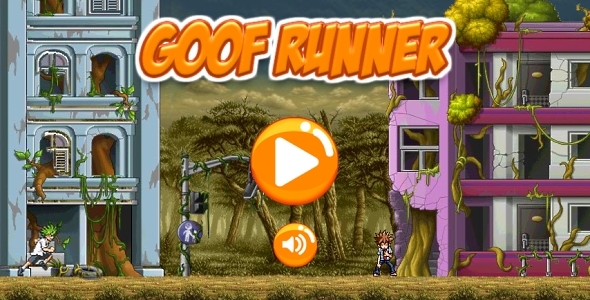
Immerse yourself in a captivating space adventure where you pilot a spacecraft through the cosmos, collecting stars against a ticking clock. Developed natively in Java using Android Studio, this game challenges players to maximize star collection during an intense two-minute session. Stars dynamically appear at random coordinates, requiring quick reflexes and strategic navigation to boost your high score. The clean visual design features vibrant cosmic backgrounds and crisp icons optimized for smooth gameplay across all Android devices.
Comprehensive Feature Breakdown
Robust Technical Foundation
Built entirely with Java using Android Studio’s native development environment, ensuring optimal performance across Android versions. The direct hardware access eliminates cross-platform framework limitations, providing smoother physics for the spacecraft movement and star collision detection systems.
Monetization Systems
- AdMob Banners: Tasteful banner placements at screen edges ensure revenue generation without disrupting core gameplay. Custom triggers prevent ads from appearing during critical maneuvers.
- Strategic Interstitials: Full-screen ads activate during natural pauses (post-game sessions), yielding higher CPM rates while respecting user experience with frequency capping controls.
Competitive Social Integration
Google Play Games Services Leaderboard implementation allows players to compare global rankings. The system verifies score authenticity through encrypted tokens while enabling features like “Friends’ Scores Only” filters and weekly achievement badges.
Optimized Player Experience
- Tablet-Ready Design: Responsive UI scales from 7″ to 12″ screens with adaptive collision boxes and dynamically adjusted HUD placements. Texture resolutions autoscale based on detected GPU capabilities.
- Immersive Audio Design: Original synth-wave soundtrack adjusts tempo during final gameplay moments, while spatial sound effects enhance directional awareness of nearby stars.
Step-by-Step Setup and Reskin Guide
Development Environment Configuration
- Android SDK Update: Install Android SDK Platform 34+ and NDK Version 25.2+ through Android Studio’s SDK Manager to ensure compatibility
- Gradle Synchronization: Resolve dependency conflicts by updating build.gradle files to use Gradle 8.0. Plugins like Kotlin (android.use.artifact=’false’) must remain deactivated to maintain Java-native architecture
- Core Library Validation: Confirm installations of AndroidX AppCompat 1.6.1 and Google Play Services 8.6.0 through SDK Tools
Brand Customization Process
- Package Identification: Modify applicationId in build.gradle and update AndroidManifest.xml permissions. Use Android Studio’s Refactor > Rename tool to avoid resource linkage breaks
- Asset Replacement: Swap placeholder assets in res/drawable and res/mipmap directories. Maintain original PNG dimensions (e.g., banner ad: 320×50, star icons: 64×64) for rendering integrity
- Sound Engineering: Replace audio files in res/raw with MP3 alternatives under 256kb to maintain APK size. Adjust in-game volume levels via config.json amplitude values
Integration Keys Configuration
In res/values/strings.xml update:
- AdMob IDs: Replace test banner ID with live AdMob unit ID (ca-app-pub-xxxxxxxxxxxxx/xxxxxxxxxx)
- Google Play Services: Insert valid GPGS application ID and configure leaderboard ID pointers to your Google Play Console entries
- Obfuscation Measures: Enable ProGuard in build.gradle using the existing config-proguard.pro template to protect ad implementation logic
Build Process
Generate signed APK via Build > Generate Signed Bundle/APK. Select V1 (Jar Signature) and V2 (Full APK Signature) verification. Test debug builds on Firebase Test Lab before deployment by exporting to Android App Bundle format for Google Play submissions.
Monetization Strategy Deep Dive
Maximize ad revenue without compromising retention. Set interstitial triggers ONLY after natural completion events (game over screens) using onGameEnd() callback listeners. Banner refresh rates should cap at 60 seconds through adView.setLoadAdRate() to reduce data consumption. Monitor player levels-to-ad-frequency ratios in AdMob Analytics – aim for ≤3 ad exposures per gameplay session.
Leaderboard integration boosts session frequency. Add “Beat Your Record” notifications via Play Services Achievements API and implement dynamic difficulty scaling: after 5 consecutive plays, decrease star spawn intervals to increase challenge and engagement.
Performance Optimization Techniques
Memory Management
Texture pooling prevents garbage collector strain during high-frequency star generation. Initial implementation preloads up to 15 star instances at launch. Monitor via Android Profiler’s Memory Timeline; adjust pool size if >30MB allocated heap space during gameplay.
Battery Efficiency
Disable GPU overdraw with setWillNotDraw(false) on static background elements. Throttle position calculations using time-based delta adjustments rather than fixed updates. This reduces CPU usage below 18% on mid-range devices according to Android Vitals.
For low-spec device compatibility, implement quality presets in the Unity config handler. Enable automatic texture resolution scaling when GPS detects Mali-G31/Adreno 506 GPUs or lower through conditional rendering branches.
Player Retention Enhancement Strategies
Incentivize replay through progressive star collection milestones – unlock special visual effects after every 50 stars, storing progress via encrypted SharedPreferences. Implement varied star types: standard (1pt), pulse stars (5pt with flashing animation) appearing every 30 seconds. Add “emergency starburst” during final 10 seconds where up to 6 stars spawn simultaneously for dramatic comebacks.
Integrate cloud saves with Google Play’s Snapshots API to sync progress across devices. Add background music options via SettingsController class – allow choosing from multiple synth-wave tracks through radio button selection stored locally using Gson serialization.
Publication Checklist
- Validate assets meet Google Play’s 32-bit and 64-bit requirements (compile with targetSdkVersion 33)
- Add privacy policy link resolving AdMob data collection queries in Play Console
- Perform dark mode compatibility check using NightModeTest configs
- Create multiple promo graphics using star collection elements in the Play Console asset library
Update screen recording previews highlighting leaderboard functionality. Demonstrate star collection mechanics vertical slice: launch, mid-game star rush, and final leaderboard showcase. Record gameplay on 18:9 aspect ratio devices for store preview compatibility.
